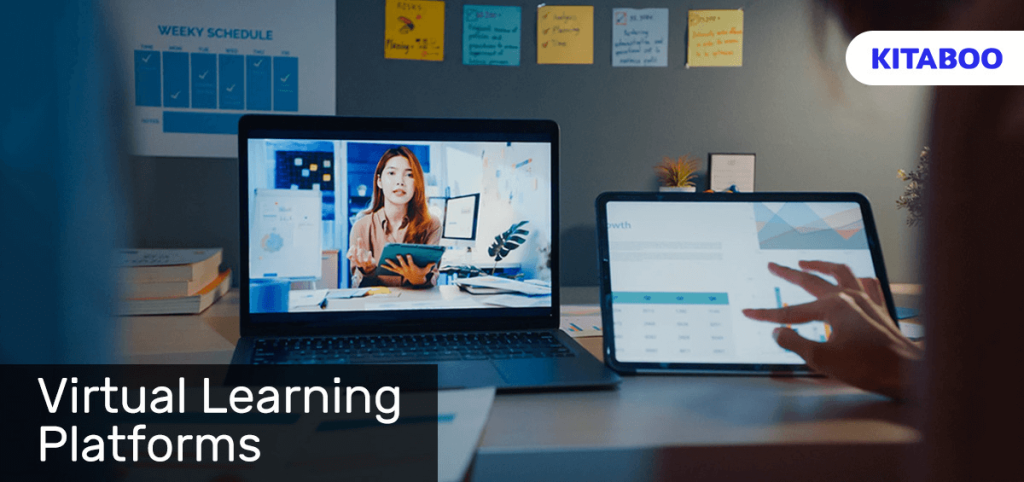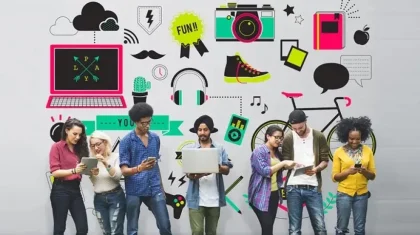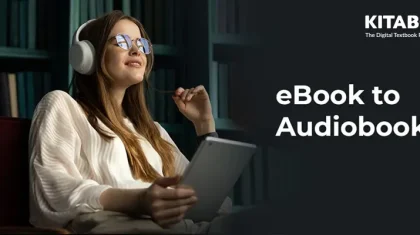
Virtual Learning Platforms: Shaping the Future of K12 Education
The onset of the pandemic brought about a revolutionary shift in the K-12 learning industry. Almost overnight, schools had to find ways to move their teaching mechanisms online, and this ultimately resulted in the rise of digital textbook platforms like KITABOO.
With the market for virtual learning booming, one can see a visible change in the manner in which it’s transforming the future of K-12 education in various ways. In this guide, we explore the impact of virtual learning platforms on the future of K-12 education, along with some of the challenges it brings up.
Table of Contents
I. The Impact of Virtual Learning Platforms on K-12 Education
- The Introduction of Self-Paced Learning
- Equal Access to Education
- Diverse Methods of Learning
- The Massive Impact of Personalized Learning
- Consistent Innovations That Improve the Learning Experience
II. In Conclusion
The Impact of Virtual Learning Platforms on K-12 Education
The Introduction of Self-Paced Learning
One of the most impactful aspects of the introduction of virtual learning was that it allowed students to learn at their own pace. As much as schools earlier did their best to ensure all students were in sync with the curriculum, traditional rote learning always had its limitations.
Add to this varying attention spans and learning styles, and what worked for one student may not have been the best approach for another.
With the introduction of virtual learning platforms, students were now able to learn in a manner that suited them best, be it in the form of videos, games, and more, and that too at their own pace. This led to a major democratizing of the education system, where every student had the tools to learn in the manner that suited them best.
Going forward, this focus on the individual is only set to increase with newer technologies and approaches to learning being incorporated on these platforms.
Equal Access to Education
Another major impact of the introduction of virtual learning platforms is that they remove the barriers created by differences in geographical locations. Before the pandemic, the only way for students to ensure they could keep up with their curriculum was by physically being present in a classroom.
However, virtual learning has ensured that students can access the same coursework regardless of where they are. With adequate training offered to teachers to master the use of digital tools, schools can ensure that they offer quality education to students regardless of their background or geographical location.
This also points to one of the challenges of virtual learning, which was evident during the period of the shift from offline to online learning. Teachers around the world found themselves ill-equipped with the skills to use online tools efficiently.
While this situation has improved with time, schools and school districts as a whole must make it a priority to equip teachers with the tools and skills necessary to take on the challenges of a largely online or hybrid system of learning.
Diverse Methods of Learning
Virtual learning platforms have opened the door to offering students various means of learning. Gone are the days when the K-12 system was dominated by the traditional lecture format of teaching.
Today, with the ed-tech market growing at a staggering rate, virtual learning tools are finding use in schools everywhere. In fact, the ed-tech market is projected to be worth $142.37 billion this year and is set to grow to a value of $348.41 billion by 2030.
These tools offer students a variety of means of understanding new concepts, thereby giving them a better chance of applying these in the practical world. From quizzes, games, videos, and AI tools, every student is something that caters to their unique learning styles.
Additionally, the use of interactive tools and the ability to seamlessly collaborate with one’s peers regardless of geographical distance ensures that virtual learning doesn’t lead to a sense of isolation.
The Massive Impact of Personalized Learning
One of the biggest impacts of virtual learning platforms is that they truly offer students an individualized experience that offers numerous benefits.
From being able to choose from a variety of tools to learn from based on their learning styles to being able to spend more time on areas of weakness, these platforms truly make the learning experience student-centric.
As a result, virtual learning has been shown to yield higher results in terms of student satisfaction and maximizing engagement, thereby motivating them to perform better and meet their learning outcomes as efficiently as possible.
Further, the variety of learning methods also offers students the environment to use their imagination while instilling greater curiosity about new concepts and ideas. It empowers students to set the course for their own learning with a system of rewards that motivates them at every step.
Consistent Innovations That Improve the Learning Experience
The ed-tech sector has been witnessing consistent innovation, be it with the dominant use of Artificial Intelligence (AI) and Machine Learning (ML) or even technologies like Virtual Reality (VR). All these technologies, along with other smaller innovations, have enabled digital learning platforms to offer students and teachers a more comprehensive and fulfilling experience overall.
E-books, for example, have become a whole lot more interactive. The use of multimedia elements on e-learning platforms, AI bots, gamification, and so on have all contributed to the increased efficacy of these platforms on the whole.
These innovations help students build and retain their technical skills while also enabling teachers to keep up with the digital trend and ensure better preparedness for future changes.
Also Read: Ebook Digital Rights Management
In Conclusion
Virtual learning platforms have truly changed the face of K-12 education in more ways than one. From making education more democratic to ensuring that the platforms offer each student an individualized experience, these platforms have made education more accessible and inclusive.
Furthermore, with technologies like AI and ML finding greater application on these platforms, there is always room for more innovation that will ultimately benefit the K-12 system as a whole. Students will be able to learn at their own pace while also being able to improve on their weaknesses, while teachers will be better equipped to leverage the technological advances these platforms have witnessed over the years.
While there are plenty of platforms, KITABOO offers some of the world’s best e-learning solutions that leverage the latest technologies and ensure that the learning experience is as engaging and comprehensive as possible.
Contact our expert team now and get started!
To know more, please write to us at contact@kitaboo.com.
Suggested Reads:
Discover how a mobile-first training platform can help your organization.
KITABOO is a cloud-based platform to create, deliver & track mobile-first interactive training content.



